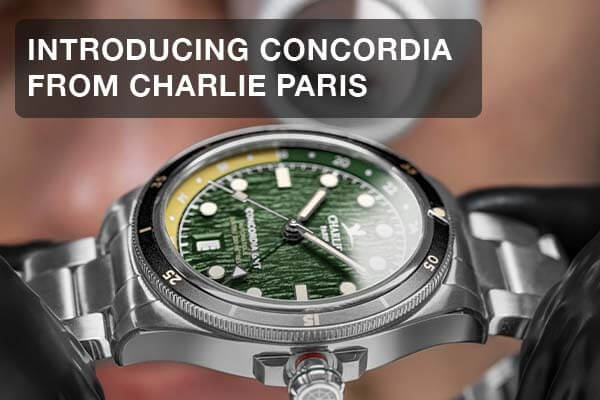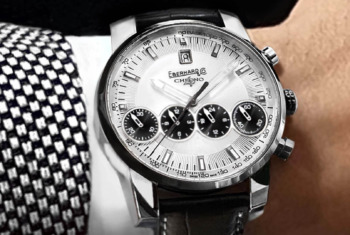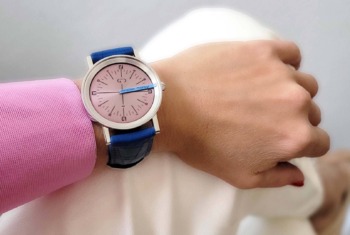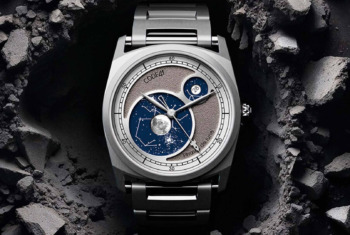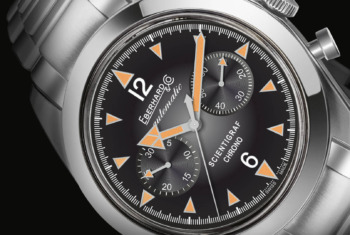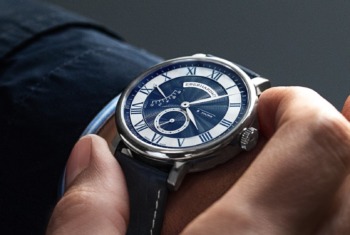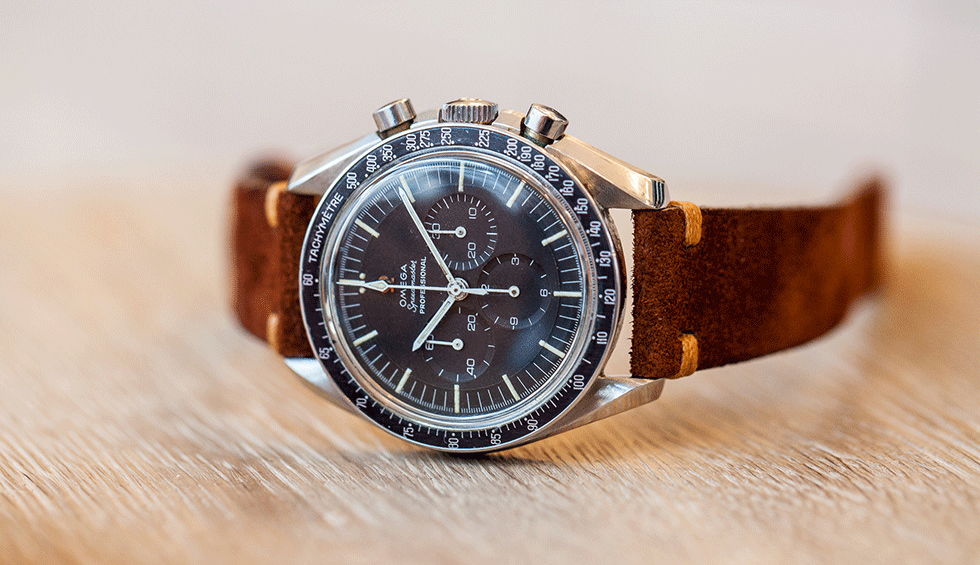
BUSTING MYTHS
The Omega Speedmaster Professional wasn’t only just the first watch on the moon, but at the same time, the most thoroughly tested timekeeper on the planet. It’s no wonder that perhaps the most famous of all chronographs is also shrouded in innumerable myths and misconceptions.
Myth 1: Omega won a bidding war against its competitors.
There is a persistent rumour that just won’t die that Omega paid off NASA to have the Speedmaster Professional as the official timekeeper for the space venture. Yet, it was entirely the watch itself, which functioned under punishing testing conditions that really made it into the official timekeeper of the mission.
Myth 2: Neil Armstrong was the one that made the Speedmaster Professional into the “First Watch on the Moon”.
Since Neil Armstrong was the first man on the moon, it’s only natural that many people assume he was also the first one to wear it on the moon. However, Buzz Aldrin was actually the first to make this watch into a legend, because Neil Armstrong left his Speedmaster back inside the space capsule due to a technical defect.
Myth 3: Buzz Aldrin’s Speedmaster Professional is a reference 145.012.
It’s frequently assumed that a 145.012 Speedmaster Professional was the first watch to be on the moon. Even though this reference had been launched before the moon mission, Buzz Aldrin’s timekeeper was actually the predecessor model 105.012. It’s entirely possible that this myth contributes to the fact that the original piece still remains lost.
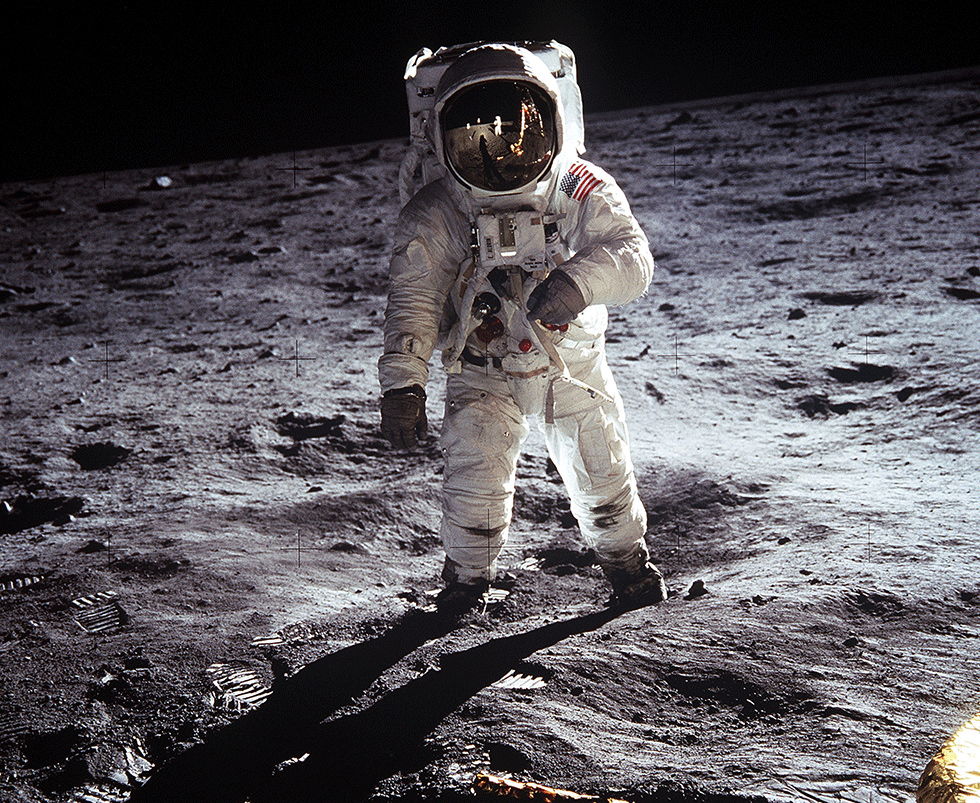
Myth 4: The Omega Speedmaster Professional was developed specifically for NASA’s mission to the moon.
Even though the Omega Speedmaster Professional became the first watch on the moon on July 20th 1969, it had already been produced years before then. At first under the name Speedmaster and later as the Speedmaster Professional. The reference that traversed the surface of the moon was launched years before in 1963 and at the time of the moon landing was out of production.
Myth 5: The Apollo 11 crew were encouraged to wear the watches when they were outside of the space capsule.
Since Speedy’s belonged to the astronauts’ official equipment just as much as their space suits, many people believe, that NASA issued an order that the watches shouldn’t be taken off during the moon mission. The truth is, that the decision of whether or not to wear their Speedmasters was left entirely at the crew’s discretion. Buzz Aldrin, a self-proclaimed watch aficionado, never removed his wristwatch during his moon walk.
Myth 6: The Omega 321 watch calibre that was incorporated into earlier Speedmaster references (including the reference 105.012) had been developed and produced completely in-house.
Actually the Omega 321 is the result of a working group at the movement manufacturer Lemania from the 1940s. The watch calibre that was produced by the Project “27 CHRO C12” was known as the Calibre 2310 at Lemania. The movement was also incorporated into chronographs from Patek Philippe, designated as calibre 2872.
Myth 7: All models that were produced after 1969 have a “First Watch Worn on the Moon” engraving on the caseback.
The successful Apollo mission received the engraving First Watch Worn on the Moon for its legendary feat in 1969. However, there are a multitude of models without the engraving even though they were produced after the moon mission. The reason is that during the time after the Apollo 11 mission, some casebacks without engravings were still in the manufacturer’s stock.

Myth 8: Significant for the designation as Pre-Moon is a production point in time that dates before the first moon landing occurred.
The informal title of Pre-Moon refers to watches that do not bear the famous First Watch Worn on the Moon lettering. However, as we explained earlier that these references were occasionally not given this engraving, it occurs sometimes that watches produced after the moon landing are referred to as Pre-Moon or Pre-Moon Watches.
Myth 9: There’s no visual differences between the Speedmaster Professional with plexiglass and those with sapphire glass.
Overlooking the fact that the sapphire glass version has a transparent caseback (the plexi glass version does not), there are also differences when viewing the upper side of the case. On the one hand, there are different material properties for the mounting of the plexiglass compared with sapphire glass. On the other hand, the curve at the edge of the plexiglass compared to that of sapphire glass is rounded out more. However, an upgrade from sapphire glass to plexiglass (or vice versa) isn’t possible because of the different types of fastening.
Myth 10: The recent Speedmaster Professional is exactly the same as its predecessor and only the scope of its delivery has changed over the years.
The new Speedmaster Professional Moonwatch has changed especially in terms of the scope of its delivery compared to its predecessor, the reference 3750.50.00. However, as for reference 311.30.42.30.01.005 with steel bracelet small changes were also made on the watch and the most recent reiteration has a watch strap that is attached to the watch through screws and also has larger links compared to its predecessor.
Do you have any questions about this brand?
contact us

